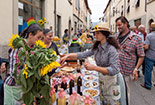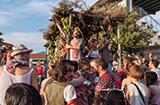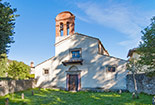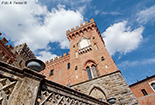Subbiano
in Casentino, a Tuscan valley with which you can get familiar in every detail through this site
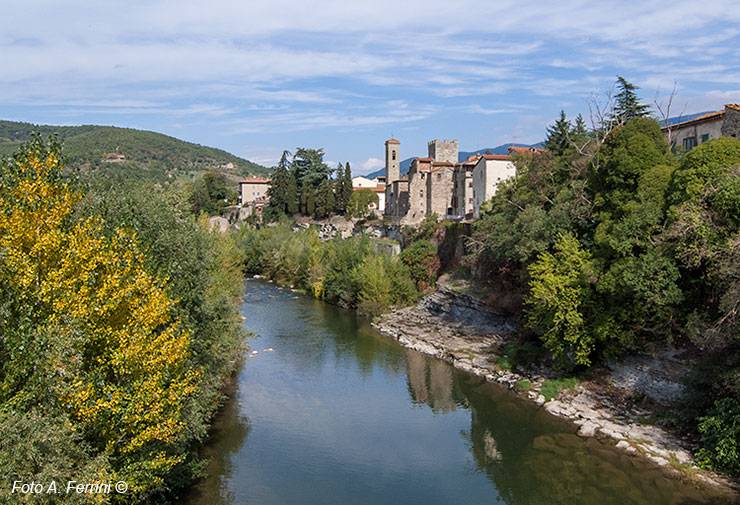
Texts and photos by Alessandro Ferrini ©
51 accurately described images of Subbiano. Click to enlarge
Subbiano and its municipal territory, the beginning of Casentino
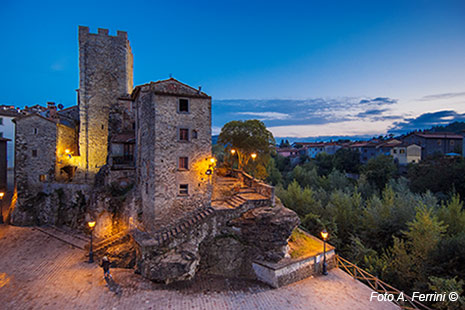 From Arezzo, proceeding on the Regional Road 71 in the direction of Casentino, after twelve kilometers we meet Subbiano. The village is located on a flat strip of land located between the left bank of the Arno and the beginning of the slopes of the Alpe di Catenaia. A mountain whose ridge marks the border between Casentino, the first valley washed by the Arno, and Alta Valtiberina, the first land crossed by the Tiber.
From Arezzo, proceeding on the Regional Road 71 in the direction of Casentino, after twelve kilometers we meet Subbiano. The village is located on a flat strip of land located between the left bank of the Arno and the beginning of the slopes of the Alpe di Catenaia. A mountain whose ridge marks the border between Casentino, the first valley washed by the Arno, and Alta Valtiberina, the first land crossed by the Tiber.
It is very likely that the area of Subbiano has known some Etruscan and then Roman settlements, but the known history of the place begins when a document of the early eleventh century when it mentions Subbiano as a territory belonging to the Bishops of Arezzo.
A few decades later another document remembers its castle placed on a sort of small promontory on the left bank of the Arno where we can still see it today, although extensively reworked. A few decades later, another document remembers his castle placed on a sort of small promontory on the left bank of the Arno where we can still see it today, although extensively reworked. Subbiano, the castle and the annexed territory saw a succession of owners and co-owners during the 11th and 12th centuries, including the Ubertini of Chitignano and the Conti Guidi. This last family owned half of the castle until 1343.
This situation had created a great deal of administrative confusion. It all ended in 1384 when Subbiano submitted to the Florentine Republic. The seat of the administrative power of Florence was the Palazzo della Podesteria that today we can see at the beginning of Via Roma, the main village of the country. It is well recognizable by the many coats of arms in stone placed on its facade, although now difficult to read. Between these walls was administered a territory roughly corresponding to those that are now the municipalities of Subbiano, to the left of the Arno, 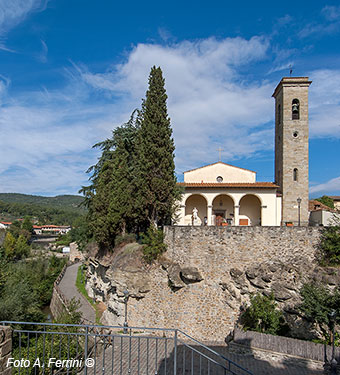 and Capolona, to the right of the river.
and Capolona, to the right of the river.
Over the centuries the old castle was transformed into a stately palace, but still today the characteristics of an ancient formwork are clear, especially for the tower present. Opposite this and in a raised position is the Church of Santa Maria della Visitazione distinguished by an elegant loggia on the facade and a high bell tower. The origins of the church date back to the early thirteenth century, so it is clear that in the Middle Ages this small area was the seat of political and religious power of the territory of Subbiano. Over the centuries, the church has undergone various renovations. The most important of these took place between the seventeenth and eighteenth centuries with the extension and elevation of the building and the construction of the loggia under which there is a modern monument dedicated to Don Lorenzo Boschi, founder of the Hospital of Subbiano. The high bell tower was built by the population in 1873 as it is reported in a small plaque. Inside the church there is a valuable wooden crucifix of the seventeenth century that has a high devotional value for the inhabitants of Subbiano. There are also two frescoes of the twentieth century by the Venetian painter Giovanni Bassan: a Deposition and a Coronation of the Virgin, the latter painted on the vault of the apse.
Not far from the church, in via Arcipretura, there is the small but interesting Museo Archeologico Giano (Janus Archaeological Museum) where are preserved finds of Roman and medieval period found in the territory of Subbiano. Why the name Janus to this museum? It is said that this was a lord who in Roman times had power over this area, then a territory under Janus or, antiquing, sub Janus. Hence the name Subbiano.
In the village there are three historical and important palaces: the Ducci one in via dell'Arcipretura, Palazzo Subiani-Ducci and the one of the Podestà, attacked, in via Roma. These residences are described and visible in the details in the photo gallery.
Subbiano is particularly active in the field of folklore. Many events of various kinds are held throughout the year. On the Sundays before Mardi Gras there is the Children's Carnival with a parade of floats through the villages of Subbiano.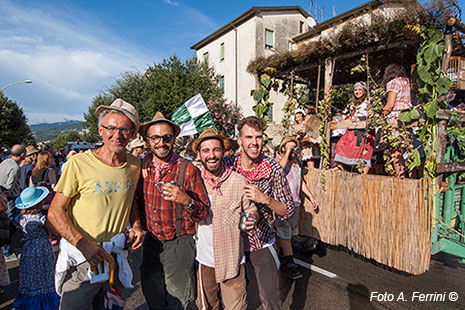 But in particular we must remember the "Mercatino del Tempo che Fu" and the "Rievocazione della Festa dell'Uva" which are held respectively in the morning and afternoon of the second Sunday in September, at the end of the "Festa di Finestate" which begins on the third Saturday in August. The first event is a market that extends over much of the country involving many inhabitants of the area who wear traditional costumes and improvise sellers of local products. All this in the midst of music, songs and lots of fun stimulated by a few glasses of wine. The afternoon event is a parade of floats decorated in the most imaginative ways, but still with lots of grapes and inspired by the agricultural tradition because they must remember the time of the harvest.
But in particular we must remember the "Mercatino del Tempo che Fu" and the "Rievocazione della Festa dell'Uva" which are held respectively in the morning and afternoon of the second Sunday in September, at the end of the "Festa di Finestate" which begins on the third Saturday in August. The first event is a market that extends over much of the country involving many inhabitants of the area who wear traditional costumes and improvise sellers of local products. All this in the midst of music, songs and lots of fun stimulated by a few glasses of wine. The afternoon event is a parade of floats decorated in the most imaginative ways, but still with lots of grapes and inspired by the agricultural tradition because they must remember the time of the harvest.
Interesting in the Municipality of Subbiano is not only its capital, but also other places and villages, as well as the natural part represented by the Alpe di Catenaia. To be mentioned are Ponte Caliano, Castelnuovo, Falciano, Vogognano, the Castle of Valenzano, Poggio d'Acona, Santa Mama. We will see the aspects of these places, accompanied by exhaustive descriptions, in the photo gallery of this web section.



